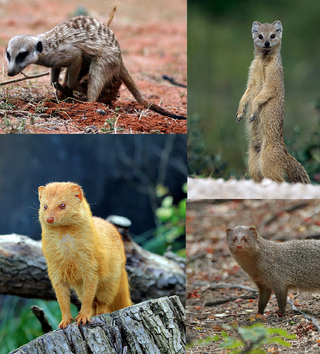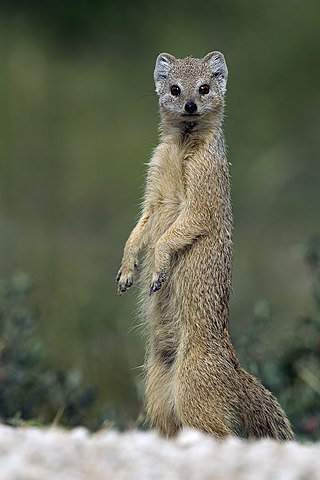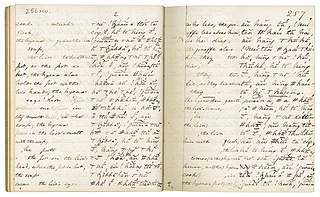Related Research Articles

Gelert is a legendary hound in a Welsh folk-tale. He is associated with the village of Beddgelert in Gwynedd in north-west Wales, the name of which was formerly believed to mean "Gelert's grave". In the legend, Llywelyn the Great returns from hunting to find his baby missing, the cradle overturned, and Gelert with a blood-smeared mouth. Believing the dog had devoured the child, Llywelyn draws his sword and kills Gelert. After the dog's dying yelp, Llywelyn hears the cries of the baby, unharmed under the cradle, along with a dead wolf which had attacked the child and been killed by Gelert. Llywelyn is overcome with remorse and buries the dog with great ceremony, but can still hear its dying yelp. After that day, Llywelyn never smiles again.

Wilhelm Heinrich Immanuel Bleek was a German linguist. His work included A Comparative Grammar of South African Languages and his great project jointly executed with Lucy Lloyd: The Bleek and Lloyd Archive of ǀxam and !kun texts. A short form of this eventually reached press with Specimens of Bushman Folklore, which Laurens van der Post drew on heavily.

The meerkat or suricate is a small mongoose found in southern Africa. It is characterised by a broad head, large eyes, a pointed snout, long legs, a thin tapering tail, and a brindled coat pattern. The head-and-body length is around 24–35 cm (9.4–13.8 in), and the weight is typically between 0.62 and 0.97 kg. The coat is light grey to yellowish-brown with alternate, poorly-defined light and dark bands on the back. Meerkats have foreclaws adapted for digging and have the ability to thermoregulate to survive in their harsh, dry habitat. Three subspecies are recognised.

A mongoose is a small terrestrial carnivorous mammal belonging to the family Herpestidae. This family has two subfamilies, the Herpestinae and the Mungotinae. The Herpestinae comprises 23 living species that are native to southern Europe, Africa and Asia, whereas the Mungotinae comprises 11 species native to Africa. The Herpestidae originated about 21.8 ± 3.6 million years ago in the Early Miocene and genetically diverged into two main lineages between 19.1 and 18.5 ± 3.5 million years ago.

The San peoples, or Bushmen, are the members of any of the indigenous hunter-gatherer cultures of southern Africa, and the oldest surviving cultures of the region. They are thought to have diverged from other humans 100,000 to 200,000 years ago. Their recent ancestral territories span Botswana, Namibia, Angola, Zambia, Zimbabwe, Lesotho, and South Africa.

ǀXam is an extinct language from South Africa formerly spoken by the ǀXam-ka ǃʼē people. It is part of the ǃUi branch of the Tuu languages and closely related to the moribund Nǁng language. Much of the scholarly work on ǀXam was performed by Wilhelm Bleek, a German linguist of the 19th century, who studied a variety of ǀXam spoken at Achterveld, and another spoken at Strandberg and Katkop while working with ǁKabbo, Diaǃkwāin, ǀAǃkúṅta, ǃKweiten-ta-ǁKen, ǀHaṅǂkassʼō and other speakers. The surviving corpus of ǀXam comes from the stories told by and vocabulary recorded from these individuals in the Bleek and Lloyd Collection.

The yellow mongoose, sometimes referred to as the red meerkat, is a member of the mongoose family. It averages about 0.45 kg (1 lb) in weight and about 510 mm (20 in) in length. It lives in open country, semi-desert scrubland and grasslands in Angola, Botswana, South Africa, Namibia, and Zimbabwe. It is the only species in the genus Cynictis.

Kgalagadi Transfrontier Park is a large wildlife reserve and conservation area in southern Africa.

Bees have been featured in myth and folklore around the world. Honey and beeswax have been important resources for humans since at least the Mesolithic period, and as a result humans' relationship with bees—particularly honey bees—has ranged from encounters with wild bees to keeping them agriculturally. Bees themselves are often characterized as magically imbued creatures and their honey as a divine gift.

The Liberian mongoose is a mongoose species native to Liberia and Ivory Coast. It is the only member of the genus Liberiictis. Phylogenetic analysis shows it is closely related to other small, social mongooses and that the banded mongoose is its closest relative.

Lucy Catherine Lloyd was the creator, along with Wilhelm Bleek, of the 19th-century archive of ǀXam and !Kung texts.

The wildlife of Zimbabwe occurs foremost in remote or rugged terrain, in national parks and private wildlife ranches, in miombo woodlands and thorny acacia or kopje. The prominent wild fauna includes African buffalo, African bush elephant, black rhinoceros, southern giraffe, African leopard, lion, plains zebra, and several antelope species.

James David Lewis-Williams is a South African archaeologist. He is best known for his research on southern African San (Bushmen) rock art. He is the founder and previous director of the Rock Art Research Institute and is currently professor emeritus of cognitive archaeology at the University of the Witwatersrand (WITS).

In mythology and the study of folklore and religion, a trickster is a character in a story who exhibits a great degree of intellect or secret knowledge and uses it to play tricks or otherwise disobey normal rules and defy conventional behavior.
Driekops Eiland is a rock engraving or petroglyph site in the bed of the Riet River close to the town of Plooysburg, near Kimberley, Northern Cape, South Africa.

Dorothea Frances Bleek was a South African-born German anthropologist and philologist known for her research on the Bushmen of Southern Africa.

The San, or Bushmen, are indigenous people in Southern Africa particularly in what is now South Africa and Botswana. Their ancient rock paintings and carvings are found in caves and on rock shelters. The artwork depicts non-human beings, hunters, and half-human half-animal hybrids. The half-human hybrids are believed to be medicine men or healers involved in a healing dance. Gall writes, "The Laurens van der Post panel at Tsodilo is one of the most famous rock paintings." High on this rock face in Botswana is the image of a "magnificent red eland bull" painted, according to Van der Post, "only as a Bushman who had a deep identification with the eland could have painted him." Also on this rock face is a female giraffe that is motionless, as if alarmed by a predator. Several other images of animals are depicted there, along with the flesh blood-red handprints that are the signature of the unknown artist. The Drakensberg and Lesotho are particularly well known for their San rock art. Tsodilo was recognised as a UNESCO World Heritage Site in 2001; not all the art covered by this is by San people or their ancestors.
The San religion is the traditional religion and mythology of the San people. It is poorly attested due to their interactions with Christianity.

Insects have appeared in mythology around the world from ancient times. Among the insect groups featuring in myths are the bee, fly, butterfly, cicada, dragonfly, praying mantis and scarab beetle.

ǁKábbo was a noted ǀXam chronicler of ǀXam culture and knowledge. He played an important role in contributing to the Bleek and Lloyd archive of “Specimens of Bushman Folklore” providing the life, rituals, and beliefs of ǀXam society.
References
Notes
- ↑ Lewis-Williams, J.D. (1990). Discovering South African Rock Art (Southern African Archaeology Series ed.). Cape Town: David Philip. p. 29. ISBN 0-86486-167-2.
- 1 2 Woodhouseuse, Bert (1986). When Animals were People. Johannesburg: Chris van Ginsburg Publications. p. 5. ISBN 0-86846-032-X.
- ↑ Dorothea F. Bleek, Bushman Dictionary , p. 296, at Google Books
- ↑ Bleek (1875) A brief account of Bushman folklore and other texts
- ↑ Lewis‐Williams, David (1997). "The mantis, the eland and the meerkats". African Studies. 56 (2): 195-216. doi:10.1080/00020189708707875.
- 1 2 Stookey, p.184
- ↑ Hastings, p.522
- 1 2 Moore, p.113
- 1 2 Meletinsky, p.169
- 1 2 3 Lewis-Williams (2000), p.143
- ↑ Lang, p.38
- 1 2 3 McNamee, p.52
- 1 2 3 Solomon, p.63
- 1 2 3 4 McNamee, p.53
- ↑ Lang, p.146
- ↑ Barnard, p.84
- 1 2 Lewis-Williams (2000), p.145
- ↑ Lewis-Williams (2000), p.146
- 1 2 Lewis-Williams (2000), p.148